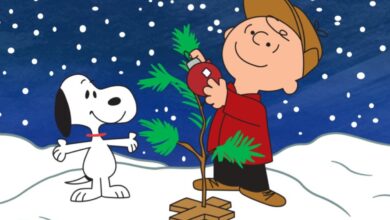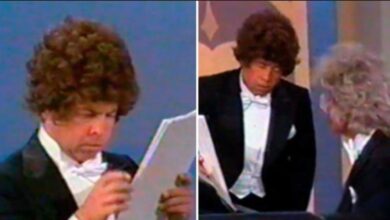The Animals’ “House of the Rising Sun” Redefines Rock Storytelling and Electrifies the Charts in 1964
In 1964, The Animals released “House of the Rising Sun,” a brooding, electrified retelling of a traditional folk song that would forever alter the landscape of popular music. Clocking in at over four minutes—an eternity for radio at the time—it defied conventional single formats and yet soared to No. 1 on both the UK Singles Chart and the US Billboard Hot 100. Its haunting tone, electric instrumentation, and narrative depth captured a moment of cultural shift, bridging folk roots with the raw energy of emerging rock music.
The Animals, hailing from Newcastle upon Tyne in England, had carved a name for themselves in the British rhythm and blues scene with their gritty, authentic sound. Led by Eric Burdon’s commanding vocals and Alan Price’s moody organ, the group distinguished themselves from their contemporaries through a darker, more mature musical approach that resonated strongly with a young audience yearning for something more profound than simple dance tunes.
The inspiration behind choosing “House of the Rising Sun” lay in the group’s shared admiration for American folk music, particularly as popularized by artists like Bob Dylan. Dylan himself had recorded a folk version of the song for his debut album in 1962, and The Animals, seeking a vehicle that would showcase Burdon’s dynamic vocal range and Price’s mastery of the Hammond organ, decided to transform the ballad into a moody, electric lament about a life gone astray.
The recording of “House of the Rising Sun” was a study in spontaneity and precision. Captured in a single take at Decca’s London studios, the session was produced by Mickie Most, who wisely allowed the band’s raw power to shine through with minimal interference. The recording’s structure—anchored by Price’s hypnotic organ arpeggios and Hilton Valentine’s distinctive guitar intro—created an unforgettable atmosphere that set the track apart from anything on the airwaves.
Upon its release, “House of the Rising Sun” was an instant phenomenon. In Britain, it dethroned pop staples from the top of the charts, signaling a hunger for more emotionally complex material. In the United States, it became one of the first British Invasion hits to carry a somber, narrative-driven tone, remaining at No. 1 for three consecutive weeks. Its success not only earned The Animals international fame but also demonstrated that rock audiences were ready for more than upbeat party anthems.
The song’s cultural impact was immediate and widespread. It challenged prevailing notions about what rock could be, introducing darker, folk-influenced storytelling into the mainstream. Its success paved the way for the rise of folk-rock and inspired countless musicians to explore more serious lyrical themes within the rock idiom, helping to lay the groundwork for the more introspective sounds of the late 1960s.
For The Animals, “House of the Rising Sun” was both a blessing and a challenge. The single catapulted them to global stardom, resulting in major tours across Europe and North America. However, it also placed enormous pressure on the group to replicate its success, a task made more difficult by internal tensions that would later contribute to the band’s fragmentation.
Within the broader rock community, the song’s influence was palpable. It demonstrated that traditional folk material could be adapted and electrified without losing its emotional core, inspiring acts like The Byrds, Bob Dylan, and later even Led Zeppelin to similarly rework folk traditions into contemporary rock masterpieces.
In terms of covers and reinterpretations, “House of the Rising Sun” has become one of the most frequently revisited songs in popular music history. Artists across genres—from Joan Baez to Dolly Parton to Five Finger Death Punch—have recorded their own versions, each finding new emotional colors in the timeless narrative of ruin and regret.
At the time of the song’s release, The Animals themselves were navigating a rapidly changing personal landscape. Sudden fame strained relationships within the group, and disputes over royalties from “House of the Rising Sun,” particularly regarding Alan Price’s arrangement credit, sowed seeds of discord that would later culminate in key departures.
Despite these tensions, the legacy of “House of the Rising Sun” only grew stronger. Decades after its release, the song remains a staple on classic rock radio, appearing on countless “greatest songs of all time” lists. Its influence stretches across genres, generations, and geographies, proving that some musical stories are truly universal.
In the broader scope of music history, the success of “House of the Rising Sun” helped accelerate the integration of folk traditions into rock, a movement that would blossom fully in albums like Dylan’s Bringing It All Back Home and The Byrds’ Mr. Tambourine Man. It showed that rock could carry the weight of tragedy, not just rebellion or romance.
The song’s power continues to resonate today, a testament to its masterful blend of narrative depth, musical innovation, and emotional authenticity. While The Animals would go on to record many other memorable tracks, none would so thoroughly capture a moment of transformation in rock music as “House of the Rising Sun” did.
Ultimately, “House of the Rising Sun” endures not merely because of its chart success but because it tapped into something timeless and primal—the human fascination with downfall, redemption, and the haunting beauty of a story well told. It remains an enduring emblem of how traditional music, when reimagined with honesty and passion, can reshape the very future of a genre.





